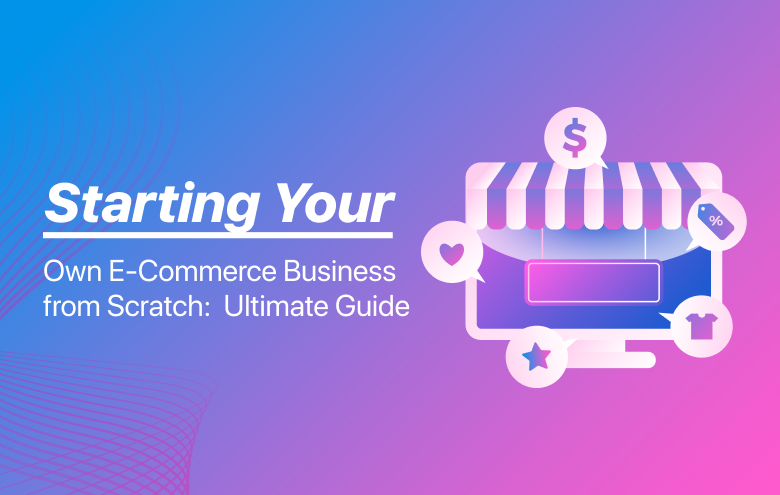Ultimate Guide
Starting an e-commerce business involves several crucial steps. Below is a comprehensive guide to help you initiate and grow your own e-commerce venture:
Step 1: Target Your E-commerce Business - Find Your Niche
- Research Your Niche: Understand the market and find a niche for your products or services.
- Define Your Offerings: Determine whether you’ll sell physical or digital products, and clearly define your offerings.
Step 2: Select Your Business and Choose the Best Structure
- Choose a Business Name: Select a unique and clear business name. Ensure that the domain name is available.
- Business Entity: Choose a legal structure for your business (e.g., LLC, sole proprietorship). Register your business entity.
Step 3: Apply for an Employer Identification Number (EIN)
- Get an EIN: Apply for an EIN from the IRS. This number is crucial for tax purposes and separating business finances from personal ones.
Step 4: Business Permits and Documentation
- Check Local Regulations: Obtain necessary business licenses and permits based on your location and business type.
Step 5: Choose an E-commerce Platform and Create a Website
- Select an E-commerce Platform: Choose a platform like WooCommerce, Shopify, or Magento based on your technical expertise and business needs.
- Create Your Website: Set up your online store, customize the design, add your domain, and manage essential operations.
Step 6: Develop Product Lists
- Inventory Management: If selling physical products, manage your inventory effectively. Consider factors like SEO, customer experience, and order processing.
Step 7: E-commerce Business Marketing
- Optimize for SEO: Implement SEO strategies to improve your website’s visibility in search engines.
- Utilize Marketing Tools: Take advantage of online marketing tools within your chosen e-commerce platform.
How Much Does It Cost to Start an E-commerce Business?
- Business Permits: Costs may vary depending on your location and business type.
- Domain Name: Purchase a domain name for your business.
- E-commerce Business Software: Costs associated with the chosen e-commerce platform, including subscription fees, hosting, and add-ons.
- Payment Processing: Some platforms include payment processing, while others may have associated fees.
- Marketing and Advertising: Allocate about 5-6% of gross revenue for marketing and advertising. Utilize free options initially and consider paid strategies as you grow.
Starting an e-commerce business involves careful planning, from choosing your niche to setting up your online presence. Keep adapting and refining your strategies based on market feedback and trends to ensure the success of your e-commerce venture.



 Ankit Patel
Ankit Patel 7 October, 2023
7 October, 2023
